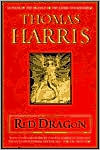TL;DR
In 'Red Dragon', FBI agent Will Graham is drawn from retirement to track a new serial killer known as 'The Tooth Fairy', seeking the help of his nemesis, Hannibal Lecter, to solve the case.
What is Red Dragon about
'Red Dragon' is a psychological thriller that explores the dark psyche of a serial killer while delving into the troubled mind of FBI profiler Will Graham. Set against the backdrop of gruesome murders, the novel intricately weaves the themes of obsession, madness, and the complex relationship between Graham and Lecter. Written by Thomas Harris, it serves as both a prequel and a cornerstone in the Hannibal Lecter series, providing critical insights into the characters that would later haunt readers in 'The Silence of the Lambs' and beyond.
Red Dragon 7 Key Takeaways
The Tooth Fairy's Murders
The story begins with a series of brutal murders committed by the enigmatic 'Tooth Fairy', who targets families, leaving a trail of terror and confusion.
Will Graham's Return
Special Agent Jack Crawford persuades Will Graham, a retired FBI profiler, to investigate the case, despite Graham’s traumatic memories of his previous encounter with Hannibal Lecter.
Graham's Struggles
Graham grapples with his mental scars, reflecting on his past while attempting to re-engage with his profiling skills to understand the killer's motives.
Lecter's Manipulation
Graham reaches out to Hannibal Lecter, who, despite being incarcerated, offers cryptic insights that both help and hinder Graham in his search for the Tooth Fairy.
The Identity Revelation
As the investigation progresses, Graham uncovers the identity of the Tooth Fairy, leading to a tense confrontation that tests his limits.
Climactic Confrontation
The climax unfolds with a heart-pounding showdown between Graham and the Tooth Fairy, revealing the consequences of obsession and the fragility of sanity.
Graham's Redemption
In the aftermath, Graham must reconcile the experiences he endured throughout the case, leading to a deeper understanding of himself and the darkness he faces.
Top Red Dragon Quotes
- We are not going to find him, because we will not know what we are looking for.
- The mind is a terrible thing to waste, especially when it is capable of such great evil.
Who should read Red Dragon?
Fans of psychological thrillers, crime fiction, and those intrigued by the complexities of the human mind will find 'Red Dragon' compelling. The book offers a gripping narrative that challenges readers to confront their understanding of morality, sanity, and the nature of evil.
Red Dragon Best Reviews
- A chilling masterpiece that delves into the mind of a killer and the torment of his pursuer. Harris captures the interplay of fear and intelligence brilliantly.
- Thomas Harris crafts a suspenseful narrative with rich character development, making 'Red Dragon' not just a thriller but a profound exploration of human psychology.
People also liked these summaries
Red Dragon FAQs
Should you read Red Dragon before Silence of the Lambs?
'Yes, reading 'Red Dragon' first provides context for Hannibal Lecter's character and enhances your understanding of the narrative in 'The Silence of the Lambs'.'
Is Red Dragon a sequel to Hannibal?
'No, 'Red Dragon' is actually the first book in the Hannibal Lecter series, published before 'The Silence of the Lambs'.'
How many books are in the Red Dragon series?
'The series consists of four novels: 'Red Dragon', 'The Silence of the Lambs', 'Hannibal', and 'Hannibal Rising', each exploring different facets of Lecter's character and his interactions with various protagonists.'
